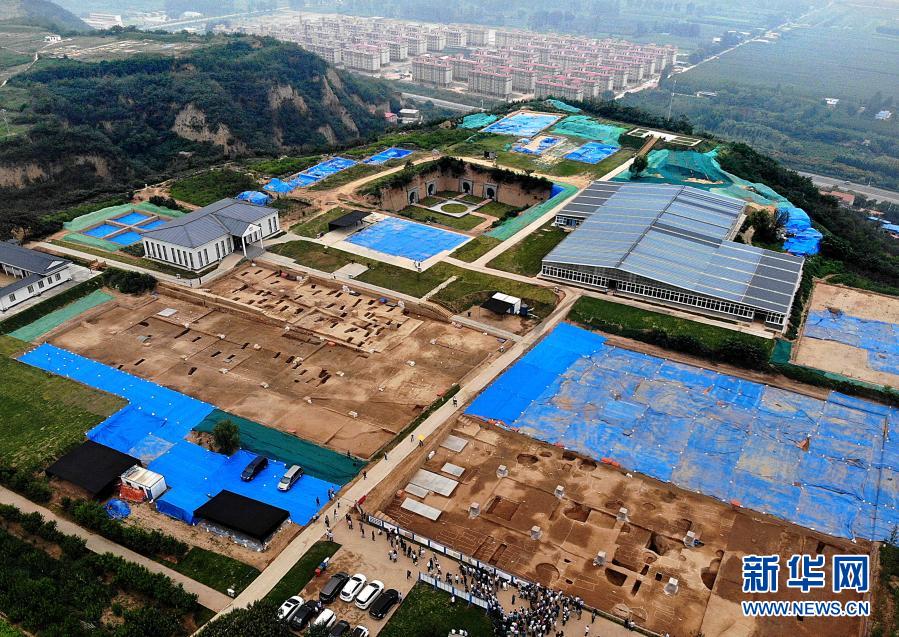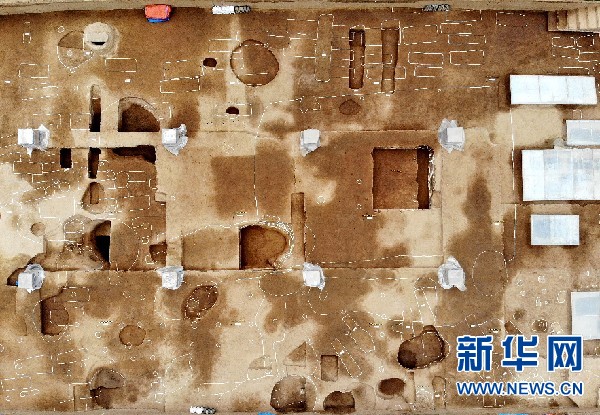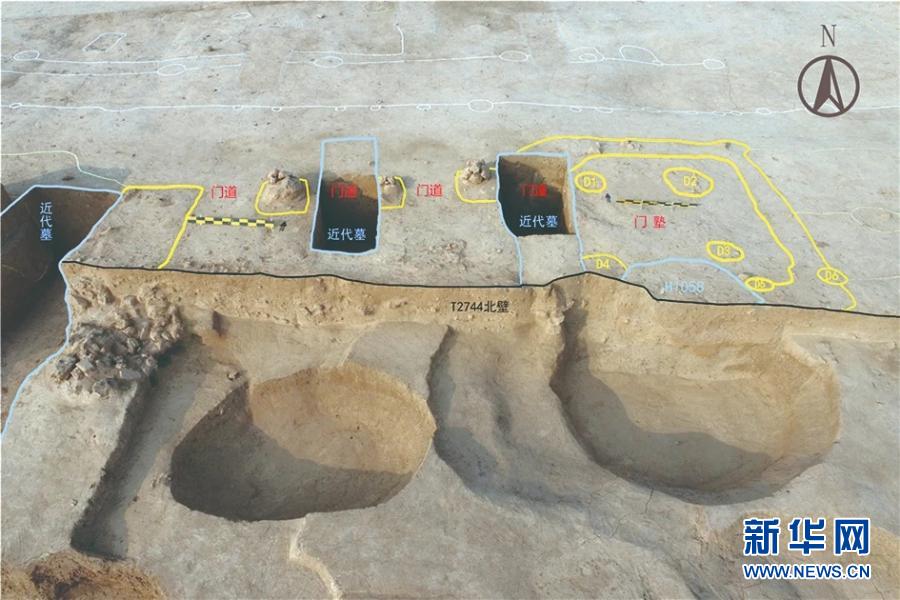
The Shuanghuaishu site in Gongyi of central China's Henan Province, August 27, 2019. /Xinhua
The Shuanghuaishu site in Gongyi of central China's Henan Province, August 27, 2019. /Xinhua
A palace dating back to about 5,300 years ago was found at the Shuanghuaishu site in Gongyi, on the outskirts of the capital city of Zhengzhou, central China's Henan Province, and believed to be the earliest palace in the country, said Zhengzhou Municipal Research Institute of Cultural Relics and Archaeology on Wednesday.
The finding advances China's palace system by about 1,000 years earlier. Previously in 2017, the palace at Erlitou site in Henan Province dating back 3,800 to 3,500 years was believed to be the earliest in the country. Later the same year, another palace was discovered at the Taosi site in Shanxi Province dating back 4,300 to 3,900 years.
"The Chinese palace system has formed a preliminary outline at the Shuanghuaishu site. This is a demonstration of the Yellow River civilization as the main root, main vein, and main soul of Chinese civilization, and a testament to the 5,000-year-old Chinese civilization," said Wang Wei, president of the Chinese Society of Archaeology.

A part of the Shuanghuaishu site in Gongyi of central China's Henan Province. /Xinhua
A part of the Shuanghuaishu site in Gongyi of central China's Henan Province. /Xinhua
The Shuanghuaishu site in Heluo Town was a huge settlement of the middle and late Yangshao culture around 5,300 years ago. It is located on the plateau on the south bank of the Yellow River where the Yihe and Luohe rivers converge. The Heluo area has always been regarded as the heart of Chinese civilization.
Covering an area of 1.17 square kilometers, the site includes the remains of three huge moats, circling large-scale residential compounds in the center, rigidly planned public graveyards and terraces for religious sacrifices.
The newly discovered palace is located on a large terrace of 4,300 square meters. In the west part of the terrace, the rectangle-shaped No. 1 courtyard of 1,300 square meters has a layout with a court that stands in the front and resting places in the back; while in the east part of the terrace, the No. 2 courtyard of 1,500 square meters has three gates, with the first gate having three doorways.

Remains of a palace with one gate and three doorways at the Shuanghuaishu site in Gongyi of central China's Henan Province. /Xinhua
Remains of a palace with one gate and three doorways at the Shuanghuaishu site in Gongyi of central China's Henan Province. /Xinhua
"The structure with one gate and three doorways at the Shuanghuaishu site looks the same as the gate at the No. 1 palace of Erlitou site, gates at the No. 3 and No. 5 palaces at Shang City in Yanshi (dating back 3,600 years), and the high-grade building gates in the later dynasties," said Gu Wanfa, director of Zhengzhou Municipal Research Institute of Cultural Relics and Archaeology, who led the excavations at the Shuanghuaishu site three times.
"This suggests that the building remains at the Shuanghuaishu site are of high level and provides important evidence for exploring the origin of the palace system in Xia, Shang and Zhou Dynasties," he added.

